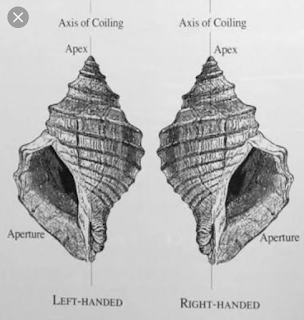Classification of Proteins
Presently there is no single system of classification of proteins is completely satisfactory.
Following are the various system of classification of proteins on the basis of solubility, shape, structure, chemical composition and nature of amino acids.
On the basis of solubility
On the basis of solubility proteins are divided into following 7 categories.
- Albumin :These are soluble in water, dil. Salt solution and dil. Acids and bases. They have property of coagulation on heating and these get precipitated with high salt concentration. Example : Egg albumin, serum albumin, lactalbumin(present in milk), legumelin (present in soyabeans ).
- Globulin : These are insoluble in water but freely soluble in dil, salt solution. These are precipitated by half saturated salt solution. Example: Serum globulin, vitellin (egg yolk), Tuberin (potato), Myosinogen (muscles).
- Glutelins : These are insoluble in water and salt solution but soluble in dilute acids and alkaline. Example :Glutenins in wheat, Oryzenin in rice.
- Protamines: These are basic proteins of low molecular weight. These are soluble in water, dilute acids and alkalines but not coagulated by heating. Example : Salmine in Salmon serum, Sturine from Sturgeon.
- Prolamines : These are insoluble in water, but soluble in 70-80%ethanol. Example :Gliaden in wheat, zein in maize, Hordein in barley.
- Histones: These are soluble in water and salt solutions but insoluble in very dil. NH4OH. Example : Globin (Haemoglobin), Basic proteins with nucleic acid in Chromosomes . (for more details click https://singhsardarni.blogspot.com/2020/09/packaging-of-dna-and-repetitive-dna.htmlhere )
- Scleroproteins (Albuminoids) : These are insoluble in water, dilute acids and alkalies. It is resistant to digestive juices. Example : Keratin in hair, nail, claw, hoof, horn ,feather, fibroin of silk fibre, collagen in tendon, elastin in ligaments.
On the basis of shape
1.Globular proteins : a.) The polypeptide chains are compactly folded to form compact spherical or globular shaped proteins.
b.) These are soluble in water and dil. Acids, alkalise and salts .
c.) These are non contractile.
d.) There are 4types of bonds: H-bonds, ionic bonds,disulphide bonds and hydrophobic bonds which maintain a tertiary structure.
Example : Egg albumin, serum albumin, globulins,haemoglobin all enzyme, proteinous hormones like insulin, venom of snake and scorpion, Glutelins of wheat etc.
2. Fibrous protein : a.) The polypeptide chains are extended along one axis and are spirally wound to form fibres.
b.) These are insoluble in water but soluble in con. Acids and alkalies.
c.) These are contractile.
d.) H-bond between the amino acid residue of sams chain or adjoining chains, so usually have a high degree of secondary structure.
Example : α-Keratins of hair, nail, claws, horns, hoofs, scales and feathers, fibroin of silk fibres, collagen of tendon, elastin of ligament, myosin and actin of muscles.
On the basis of chemical composition
Proteins are divided into three categories .
1.)Simple protein (Holoproteins): These are formed of only amino acids ,so on hydrolysis, these only give amino acids or their derivatives e. g. Albumin, globulin, Prolamines, protamine, histone etc.
2.) Conjugated protein (Heteroprotein) : Protein is associated with a non-proteinous compound called prosthetic group, which is essentially for biological functioning of proteins.
- Types of conjugated protein
2.Lipoprotiens: proteins +lipid. Example : egg yolk, serum, milk etc.
3.Glycoprotiens: proteins +mucopolysachride example : musin, blood antigen, pituitary hormone
4.Phosphoprotein: protein associated with phosphoric acid residue. Example :Casein (milk), ovovitellin (egg yolk).
5.Chomoproteins: proteins associated with porphrin ring pigment. Example : haemoglobin, Myoglobin etc.
6. Mettaloproteins: proteins associated with metal ions (Fe, Co, My, Zn, Cu etc.) as cofactor. Example Ferritin, Carbonic anhydrase, catalase, plastocynin etc.
3.)Derived protein :These are the product of Denaturation or partial digestion of proteins
- Types of derived protein
B.) Metaproteins :Formed in later stage of proteins digestion by slightly stronger acid and alkalies. Example : acid and alkali Metaproteins.
C.) Coagulated proteins: Denatured proteins formed by the action of heat, UV rays, X-rays etc.Example : Cooked protein, coagulated albumin.
On the basis of nature of amino acids
Proteins are of two types on the basis of nature of amino acids.
- Acidic proteins : These have more number of acidic amino acids like glutamic acid and aspartic acid, so behave as anions and have acidic properties e. g. Most of blood proteins
- Basic proteins : These Have more number of basic amino acids like lysins and arginine, so behave as cation and have basic properties e.g. histone









Well done keep it up
ReplyDeleteNice 👍
ReplyDelete